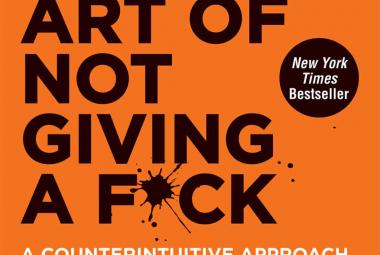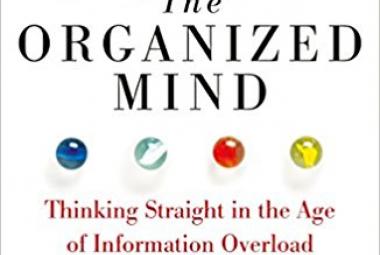The first article in this series described what a burn out is, where it comes from, and that we can prevent a burn out using both an individual as well as organizational level.
This article will provice some more details about interventions on a personal level. There are many topics to work on, all with a strong possibility to reduce the change of a burn-out. These interventions can be divided into three categories, which are based on Semmer his research, and include the categories goal setting, your level of resilience, and your coping style (Semmer, 2005).
GOAL SETTING is a topic that determines the way people experience success or not. The background of this category is, that you feel successful when you achieve your goals and feel stressed when you cannot achieve your goals. Semmer identifies three different types of goals that can lead to stress (Semmer, 2005).
Task related goals. The stress that results from this kind of goals is related to your sense of what tasks have to be finished by when. I estimate that these kind of goals can mainly be found in the professional environment, when workload increases, but may also be part of your personal life where a big project like building your own house or training for a marathon demands a lot of action from you.
Role identity goals. These are related to wanting to work in a specific position that may actually not be aligned with your strengths. In the professional environment, I know examples of people who were fantastic as part of a team, like a project leader, but not happy with leading a team, in this example a team of project leaders. Just because you are the best in your team, does not automatically make you the best leader of that team. When leading does not suit your personal preferences, this kind of promotion can lead to a lot of stress.
Self-image related goals. This is the kind of stress that comes from goals that you set yourself based on how you would like to be perceived by your peers, friends, or family. For instance: you may have the goal that everybody should like you, or that you have to be both a successful family man, have a flourishing career, and have the body of an athlete at the same time. Even though social media let us believe that this is possible, most of these goals are unrealistic and can lead to constant disappointment in yourself, which lead to stress.
Targets that are unreachable increase the possibility to experience stress, and most of this target setting happens in our head, not just on paper at work.
Interventions on goal setting strategies exist in multiple forms. Workshops and seminars are taught based on theories described in personal development books, for which I can recommend the following:
- Prioritizing tasks based on Stephen Covey his model of importance and urgency (Covey, 1989). The goal is to stop doing unimportant work, and do important work before it becomes urgent.
- You can use the Pareto principle to reduce the number of important tasks that are necessary to be successful (Koch, 2013). 20% of tasks lead to 80% of the result, so focus on those 20%, or maybe even on 20% of that 20%. You can apply the Pareto principle until you have only 1 task left. That is the task to focus on at this moment (Keller & Papasan, 2012).
- Using a system to keep track of all work that needs to be done as described by David Allen in Getting things done (Allen, 2001), for instance the E-mail system that I describe in my book Lean Transformations (Panneman, 2017).
- Choosing your career path based on your personal preference (and not the preference of your parents or the career path that you expect to make most money). Theories include the Belbin tests of team roles (Belbin, 1981), or a 4 type color model which is based on the personality types of Carl Jung.
- The personal focus on one thing only (Galler & Papasan, 2012). We see extraordinary things on the internet every day, but we forget that these extraordinary things happen to people who focus on that one thing every day. To be successful in one aspect of your live, sacrifices are usually made in another one.
RESILIENCE, is defined as the capacity to recover quickly from difficulties; your so called toughness. There are at least four factors that influence the speed in which you recover from a stressful experience (Semmer, 2005):
Hardiness, which includes three parts: commitment, sense of challenge and sense of control of the situation. Increase one of these three parts, and you will feel less stressed.
Sense of coherence, in which the environment is perceived as structural, predictable, and explicable (able to be explained). The more coherent you experience your environment, the less stress you experience.
Self-esteem, the confidence you feel that you can do your job. The more confidence you have, the less overwhelmed you feel when tasks become complex and more in number.
Optimism, the feeling that everything will turn out ok, buffers for stress. Optimism leads to pro-active problem solving strategies, where pessimism leads more towards re-active denial-oriented strategies.
Interventions on resilience on a personal level are also based on personal development books that include:
- Commitment at work can improve when you work on the trust in your team (or family), which make it ok to start constructive conflict (Lencioni, 2002). When you speak up in your team on important issues, the commitment you feel towards the outcomes of the team increases.
- You can become a more trustworthy person by following the 13 tips of Stephan Covey (Covey, 2006) that include taking straight, being transparent, right your wrongs and keeping to your commitments.
- To keep the sense of challenge in the green and be effective, Maxwell describes that you should try to work 80% of the time on tasks within your strengths zone, 15% of your time on tasks within your learning zone, 5% on work outside your strengths zone, and 0% within your weakness zone (Maxwell, 2011).
- Learning how to have crucial conversations may help you to be more effective in sharing your opinion in your team, even when the stakes are high (Patterson, 2012). This can help you both your self-esteem, and increase commitment for the team targets afterwards.
- Work on your self-esteem, for instance with the 12 tips from the positivity blog. Topics you can work on include comparing yourself to yourself instead of to others, learning how talk to yourself in an appreciative rather than critical way, and letting go of perfectionism (Edberg, 2013).
- The more energy you have, the more optimistic you feel about the task at hand. This means, that you can increase your own optimism by doing things that generally improve your energy levels. Plan enough time to recharge your batteries and include enough: exercise, nourishment, social contacts, humor, relaxation and sleep in your daily routines (Gonnissen & Goudsmet, 2013).
COPING is the third topic that can be trained on a personal level and it is about how people deal with a stressful situation (Semmer, 2005). There are different types of frameworks of coping strategies, but most of them are unhelpful because all ways of coping are multidimensional and strategies can fit both sides of the coin. They can, however, help us define what strategies work well, and which don’t. Two most famous coping strategy frameworks are:
Problem-focused vs. emotion-focused strategies. Problem focused means you use ratio to try to find the root-cause to your problem. You take control of your situation, collect data, and outweigh the pros and cons (Lazarus & Folkman, 1984). Emotional focused strategies are focused on how these kind of situations make you feel and dealing with those emotions. These are usually the better option when in situations where the rational approach does not solve the issue alone.
Active vs. passive focused strategies, are about whether you take proactive action when you encounter a problem (like problem solving, looking for humor, asking for help) or choose a more destructive approach (blaming somebody, denying the problem, or simply ignoring it).
Intervention strategies on a personal level in the coping area include:
- Doing a 5 why analysis on the situation as a problem focused strategy. What is it in this situation that it bothering you? After that, there are two directions of action: either work on changing your attitude towards the situation, or reduce changes of you running into the same situation again.
- Combining the above rational approach with an active approach by starting formulating actions for yourself: what can you do right now, that makes everything else in the future easier for yourself? (Keller & Papasan, 2012)
- Relaxing exercises like meditation, where you focus on a certain mantra, or try to focus on thinking about nothing to relax your mind and taking the edge of things. This is an emotional focused strategy.
- Practicing (Yin) yoga, or getting a regular massage. These emotional based strategies are founded on the idea that emotions get trapped in your muscle, and by stretching your muscles, you release these emotions.
- Another group of strategies to help you get to know your emotions is with pen and paper: journaling and positive reframing are two common strategies that help you reflect on difficult situations and writing them down helps to clarify things for yourself and can be relaxing.
- Finally, in terms of proactive versus reactive responses, all personal growth and success gurus agree, that taking a proactive stand in life helps you to be both happier, more successful and less stressful than taking the reactive approach. Do a 5x why instead of a 5x who (Panneman, 2017) focus on what you yourself can do (Covey, 1989) to make the situation better, and set the first step right now (Keller & Papasan, 2012) .
Preventing or dealing with a burn-out can be a very complex matter. Since stress is something subjective, an experience that is personal, there are many things that we can do to reframe our thinking, and work on the way we perceive the current situation. These interventions only cover the symptoms though. Even better than changing the way we experience situations, is to change the situation. And since our professional live plays a big part in our perceiving of stress, the organization in which we work can also play an important role in changing the situation itself that led us feel overwhelmed. This will be the topic of the next articile in this series:
Continue to:
Prevent a Burn out (3/3): Interventions on Organizational Level
REFERENCES:
Allen, D., 2001, Getting Things Done, the Art of Stress-free Productivity, London: Penguin Books (summary / order this book)
Belbin, R. M. (1981). Management Teams - Why They Succeed or Fail. Oxford: Butterworth Heinemann.
Blanchard, K., & Johnson, S., 1981, The One Minute Manager, New York: William Morrow and company Inc. (summary / order this book)
Covey, S. 1989, De zeven eigenschappen voor succes in je leven, Amsterdam: Business Contact. (summary / order this book)
Covey, S.M.R., 2006, The Speed of Trust – One Thing that Changes Everything, New York: Free Press
Edberg, H. 2013, article on positivityblog, visited 14th of April 2018
https://www.positivityblog.com/improve-self-esteem/
Gonissen, K., Gousmet, A., 2013, De Bedrijfsatleet - Jezelf managen onder druk, Alphen aan de rijn (NL): vakmedianet (summary)
Keller, G., Papasan, J., 2012, The One Thing – The Surprisingly Simple Truth Behind Extraordinairy Results. US: Rellek Publishing Partners
Koch, R. (2013). The 80/20 Manager - Ten Ways to Become a Great Leader. London: Piatkus.
Maslach C, Jackson SE. The measurement of experienced burnout. J Occup Behav. 1981;2:99-113.
Maxwell, J.C., 2011, The Five Levels of Leadership – Proven steps to Maximize your Potential, New York: Centre Street (summary / order this book)
Lazarus, R.S., Folkman,S, 1984, Stress, Appraisal, and Coping, …
Lencioni, P., 2002, The Five Dysfunctions of a Team, San Fransisco: Jossee-Bass (summary / order this book)
Panneman, T, 2017, Lean Transformations - when and how to climb the four steps of Lean maturity, Maarssen (NL): panview. (summary / order this book)
Patterson, K., Grenny, J., McMillan, R., Switzler, A., 2012, Crucial Conversations – Tools for Talking When Stakes Are High, New York: McGraw Hill
Psychology today Website. Visited April 3rd 2018: https://www.psychologytoday.com/us/blog/pressure-proof/201308/six-sources-burnout-work
Schabracq, M.J., Winnubst, J.A.M., Cooper, C.L., 2005, The Handbook of Work and Health Psychology. New York: John Wiley & Sons, Ltd
Skinner, E. A., Edge, K., Altman, J., & Sherwood, H. (2003). Searching for the structure of coping: a review and critique of category systems for classifying ways of coping. Psychological Bulletin, 129(2), 216-269. doi:10.1037/0033-2909.129.2.216















